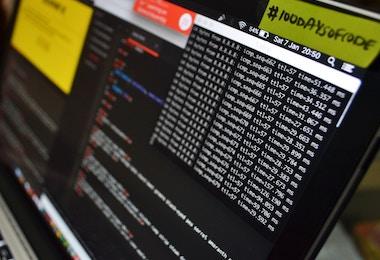Security | Threat Detection | Cyberattacks | DevSecOps | Compliance
logit.io
Interview with Cybersecurity Specialist, John Bambenek
In the latest instalment of our interviews speaking to leaders throughout the world of tech, we’ve welcomed John Bambenek, cybersecurity specialist at Bambenek Consulting Ltd.
What is Vulnerability Assessment?
Each day there are more and more cyber attacks and threats occurring, with those looking to exploit your IT systems finding various different methods to infiltrate your IT infrastructure. This means it's more vital than ever that you limit the vulnerabilities of your IT infrastructure and guarantee its security. In regards to this, a viable solution available to you is vulnerability assessment.
What is Data Governance?
As the importance of data continues to grow, and the amount of data being processed by organizations grows further, many organizations are beginning to feel the constraints and demands of compliance. Therefore this makes data governance paramount to guarantee the security, accuracy, availability, and usability of your data. Data governance encapsulates the approach to managing data during its lifecycle, from acquisition, to use, to disposal.
Interview With CTO, Phil McParlane
In the latest instalment of our interviews speaking to leaders throughout the world of tech, we’ve welcomed Phil McParlane, CTO and founder at 4dayweek.io.
What Is NISPOM?
The National Industrial Security Program (NISP), the authority within the United States for access to classified data by government contractors. Have outlined requirements to ensure continued availability and integrity of classified data, and prevent its unauthorised disclosure. The operating manual (NISPOM) affects all government agencies and commercial contractors who have access to classified data.
Interview With CTO, Jamie Howard
In the latest instalment of our interviews speaking to leaders throughout the world of tech, we’ve welcomed Jamie Howard, CTO at Capital on Tap. With over 20 years in technology, specialising in start-up/scale-up businesses, Jamie has experience across the engineering, media and financial services sectors.
CMMC Requirements For Small Businesses
There are five levels that make up the Cybersecurity Maturity Model Certification (CMMC) framework. These levels range from Level 1 (Basic Cyber Hygiene) to Level 5 (Advanced/Progressive). With each level of cybersecurity certification, the requirements of the previous level are built upon and new controls and practices are introduced.
Interview With Professor Michael S. Wills
In the latest instalment of our interviews speaking to leaders throughout the world of tech, we’ve welcomed professor Michael S. Wills, SSCP, CISSP and CAMS at Embry-Riddle Aeronautical University.
What Is GLBA?
The purpose of this guide is to provide you with a thorough understanding of GLBA as well as tips for ensuring compliance with your organization.











